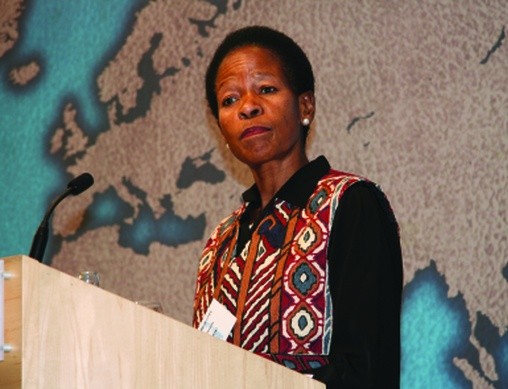 - Going back to the Romans or the Greeks we have seen cities rise and fall. Therefore we must also think ahead and ask: What will cities look like one hundred years from today? This was the way in which Ms Anna Tibaijuka, Executive Director of UN-Habitat, speaking at the Conference introduced "The Future of Cities" at Chatham House in London this February.
- Going back to the Romans or the Greeks we have seen cities rise and fall. Therefore we must also think ahead and ask: What will cities look like one hundred years from today? This was the way in which Ms Anna Tibaijuka, Executive Director of UN-Habitat, speaking at the Conference introduced "The Future of Cities" at Chatham House in London this February.
- In the future, regional and urban development will be more linked, in such a way that successful cities will be located in successful regions. Some of these cities will turn into powerful drivers of regional and national development, continued the UN-Director of Habitat who went on to underline the following:
- Uncertainties however remain, such as the volatility of global markets, potential new financial crisis, challenges to national political cohesion, regional disparities but perhaps most importantly the potential for social and ethnic conflicts and even the advent of regional or national insurgencies.
Ms Tibaijuka warned against the trend that many cities today: "create wealth along with extreme inequality" together with various forms of exclusion and marginalisation which can often have serious environmental effects.
- The evidence shows that some of these new urban configurations – cities in clusters, corridors and regions – can result in severe urban primacy and unbalanced regional development, as they strengthen ties to existing economic centres rather than allowing for more diffused spatial development, she explained, adding: - In this process, it is also likely that these new configurations generate poverty and exclusion for some regions and groups that are left out of this development process.
The Habitat-chief continued pinpointing that never before in history have so many people been lifted out of extreme poverty in such a short period: - Over 500 million people, equivalent to the total population of Europe, have begun the process of escaping this scourge in the last thirty years, especially in rural areas.
- However, is it not rather odd and somewhat contradictory that while global poverty has been reduced poverty in urban centres has increased and continues to grow year after year?
From 1993 until the present the world's population has probably increased by one billion people. However, the number of people living in extreme poverty (below the so-called poverty line at 1.25 USD) has risen by 'only' 100 million, from 700 million to 800 million according to the World Bank. The majority live in rural areas.
- For people living in slum conditions the situation is rather bleak. They lack jobs, income, adequate housing, access to proper water and sanitation as well as being faced with the constant risk of being evicted because of their lack of secure tenure rights. I think this is a recipe for disaster and conflict, underlined the UN-Habitat chief.
The organisation estimates that one billion people, or one-third of the world's urban population, currently lives in such conditions:
- If cities and nations go on treating these areas as "zones of silence" in terms of knowledge, opinion and discussion, it is very likely that the numbers of urban dwellers living in favelas, shanty-towns, bidonvilles, kampungs, mudon safi and other slum-like conditions will continue to expand, reaching 1.6 billion by 2020, noted the UN-specialist on human settlement and habitation.
- Therefore the real challenge of urbanism is to change this in a more positive direction. Governance at both national and city level will of course be important, but I will also underline the importance of cooperation – both within but also between cities, concluded Ms Tibaijuka,
David Satterthwaite is the editor of Environment & Urbanization a journal for international research on settlement issues: – I will underline that too often slums are regarded as negative just by definition, but when half of the population of Mumbai, Delhi and Nairobi live in 'informal' settlements this is not for reasons of poverty alone but in addition reflects also the legacy of decades of political choice – this, at least in India, might be changing.
These settlements are also very useful for the city's economy because they provide housing that low-income groups can afford. It is where the cheap labour force and most of its entrepreneurs live – and often work – and where you find a whole range of services used by formal companies and corporations throughout the city.
Mr. Satterthwaite adds that there is no inherent link between rapid city growth and city problems: - Many of the world's fastest growing cities have actually been in the USA. In addition, some of the fastest growing cities in Latin America are also among the best governed with the best health statistics – for instance Porto Alegre and Curitiba in Brazil.
By Odd Iglebaek